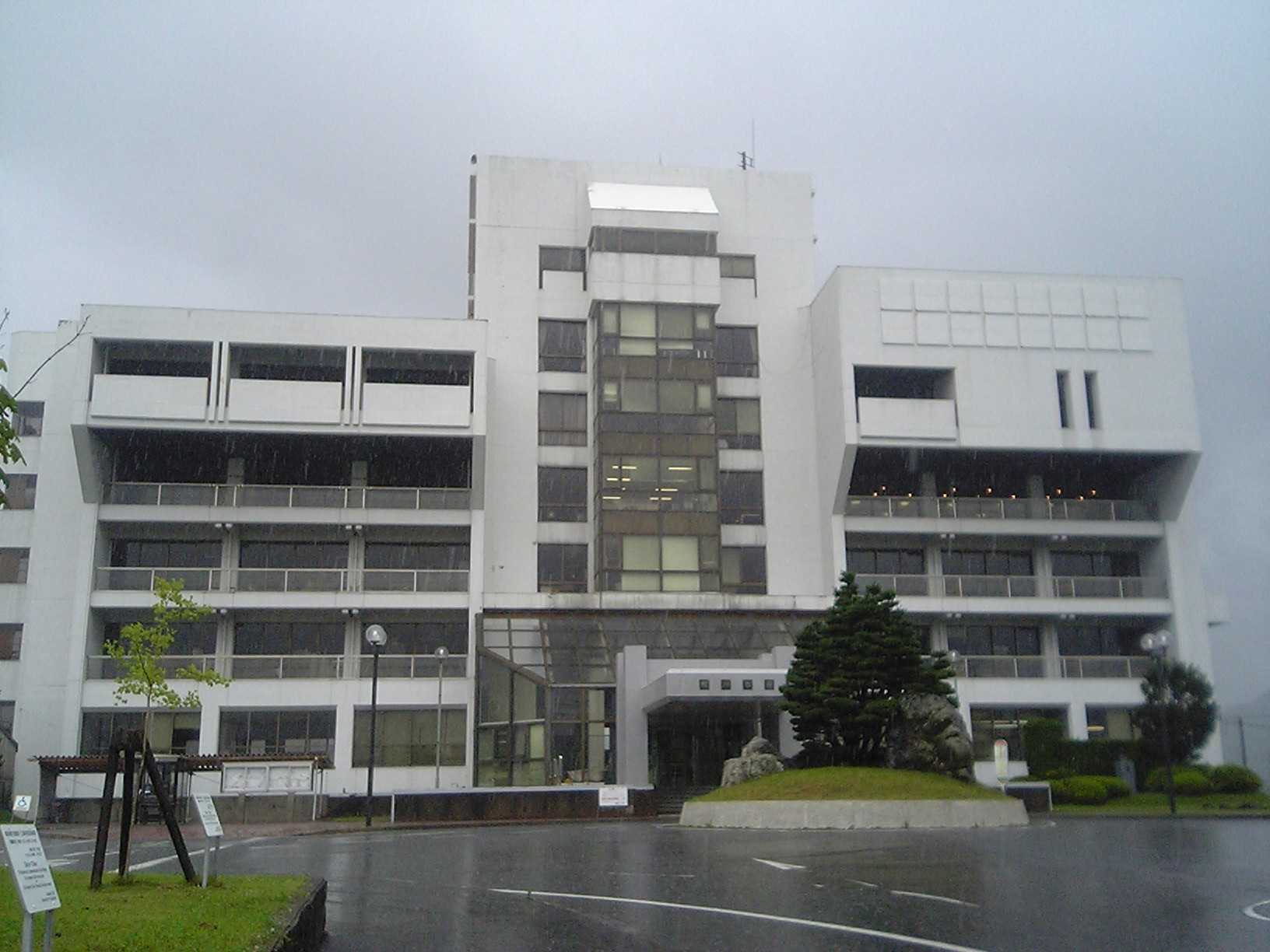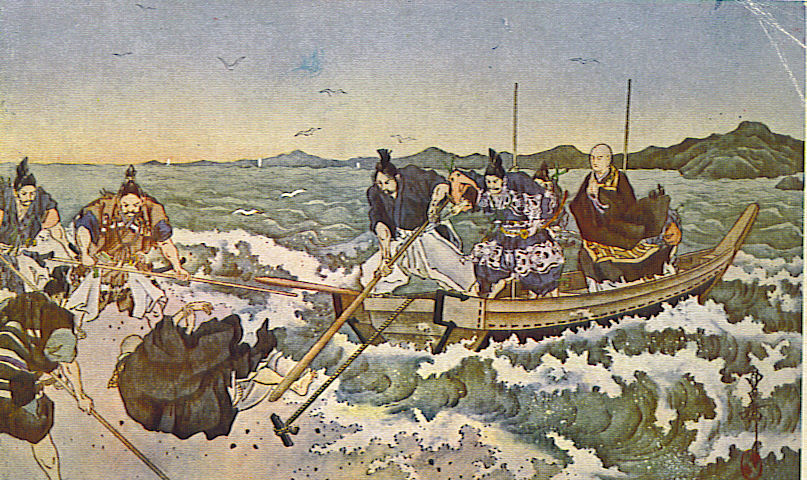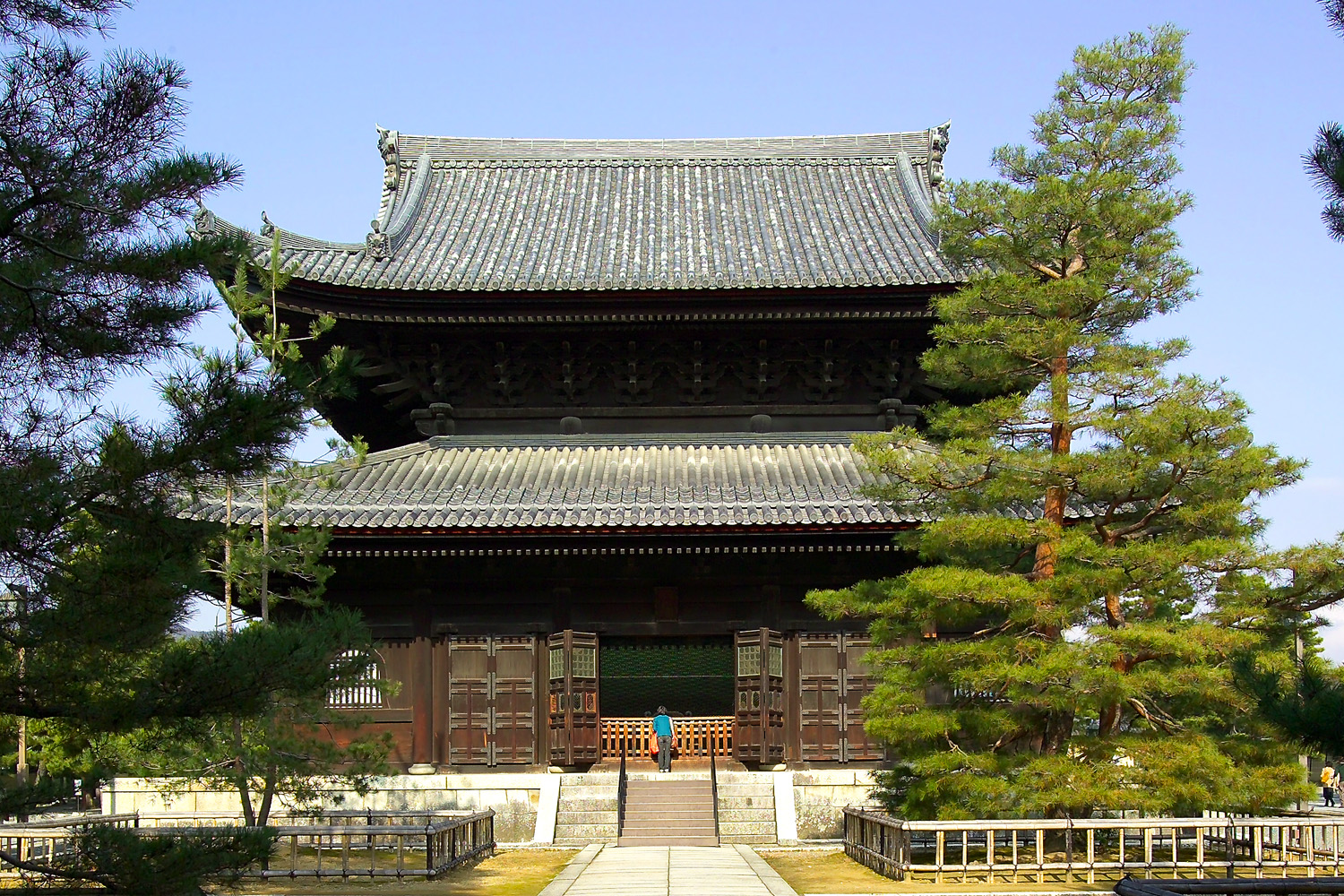|
Kyōnin-ji
The Kyōnin-ji, situated in Kamogawa, Chiba, Kamogawa, Chiba Prefecture, was founded on 5 March 1281 and is one of the most important historic temples of Nichiren-shū. On 11 November 1264, following an invite by Kudō Yoshitaka Lord of Amatsu, Nichiren came under attack by Nembutsu adherents while on his way to the Lord’s residence. Kyōninbō Nichigyō and Kudō Yoshitaka who rushed to his aid were killed in the event while two other of Nichiren's companions were injured. Legend has it that Nichiren's prayer beads protected him from serious injuries. In remembrance of those events Nichiryū, son of the killed Kudō Yoshitaka and a disciple of Nichiren, founded the temple in 1281. Next to buildings like the Soshidō (founders hall) and the Hondō (great hall) an 800-year-old cedar tree are regarded as the temple's main landmarks. According to legend the goddess Kishimojin appeared to Nichiren in the old cedar tree. External links Nichiren-shū: Kyōnin-ji {{DEFAULTSO ... [...More Info...] [...Related Items...] OR: [Wikipedia] [Google] [Baidu] |
Nichiren-shū
is a combination of several schools ranging from four of the original Nichiren Buddhism, Nichiren Buddhist schools that date back to Nichiren's original disciples, and part of the fifth: Overview The school is often referred to as the Minobu Sect due to its prominence within the Mount Minobu area. The school's head temple, Kuon-ji, is located on Mount Minobu where Nichiren lived in seclusion and where he asked to be buried. Another significant temple of the sect is the Ikegami Honmon-ji where Nichiren died. Accordingly, many of Nichiren's most important personal artifacts and writings, also considered to be National Treasures of Japan, are within their safekeeping. The sect is also known for its more open and tolerant views of other Buddhist traditions, even mixing or incorporating various mixed Buddhist beliefs and Shinto practices into their own aesthetics, most notably the use of various religious statues, the red stamping practice of Shuin for novelty, esoteric combinati ... [...More Info...] [...Related Items...] OR: [Wikipedia] [Google] [Baidu] |
Kamogawa, Chiba
is a city located in Chiba Prefecture, Japan. , the city had an estimated population of 31,722 in 14,558 households and a population density of 170 persons per km2. The total area of the city is . The name of the city consists of two ''kanji'' characters: the first, kamo (鴨), meaning "duck", and the second, kawa (川), meaning "river". Geography Kamogawa is near the southeastern tip of the Bōsō Peninsula, facing the North Pacific Ocean, about 50 km south of the prefectural capital, Chiba, and about 85 km from the capital of Japan, Tokyo. Kamogawa is home to Mount Atago, which at is the highest point in Chiba Prefecture. Mount Kiyosumi () is home to Seichō-ji. The Kamo River () empties into the Pacific Ocean at Kamogawa. Neighboring municipalities Chiba Prefecture *Futtsu * Katsuura *Kimitsu *Kyonan *Minamibōsō * Ōtaki Climate Kamogawa has a humid subtropical climate (Köppen ''Cfa'') characterized by warm summers and cool winters with light to no snowfa ... [...More Info...] [...Related Items...] OR: [Wikipedia] [Google] [Baidu] |
Chiba Prefecture
is a Prefectures of Japan, prefecture of Japan located in the Kantō region of Honshu. Chiba Prefecture has a population of 6,278,060 (1 June 2019) and has a geographic area of . Chiba Prefecture borders Ibaraki Prefecture to the north, Saitama Prefecture to the northwest, and Tokyo to the west. Chiba (city), Chiba is the capital and largest city of Chiba Prefecture, with other major cities including Funabashi, Matsudo, Ichikawa, Chiba, Ichikawa and Kashiwa. Chiba Prefecture is located on Japan's eastern Pacific Ocean, Pacific coast to the east of Tokyo, and is part of the Greater Tokyo Area, the most populous metropolitan area in the world. Chiba Prefecture largely consists of the Bōsō Peninsula, which encloses the eastern side of Tokyo Bay and separates it from Kanagawa Prefecture. Chiba Prefecture is home to Narita International Airport, the Tokyo Disney Resort, and the Keiyō Industrial Zone. Etymology The name of Chiba Prefecture in Japanese is formed from two kanji char ... [...More Info...] [...Related Items...] OR: [Wikipedia] [Google] [Baidu] |
Nichiren
was a Japanese Buddhist priest and philosopher of the Kamakura period. His teachings form the basis of Nichiren Buddhism, a unique branch of Japanese Mahayana Buddhism based on the '' Lotus Sutra''. Nichiren declared that the '' Lotus Sutra'' alone contains the highest truth of Buddhism and that it is the only sutra suited for the Age of Dharma Decline. He insisted that the sovereign of Japan and its people should support only this form of Buddhism and eradicate all others, or they would face social collapse and environmental disasters. Nichiren advocated the faithful recitation of the title of the ''Lotus Sutra'', '' Namu Myōhō Renge Kyō'', as the only effective path to Buddhahood in this very life, a path which he saw as accessible to all people regardless of class, education or ability. Nichiren held that Shakyamuni and all other Buddhist deities were manifestations of the Original Eternal Buddha (本仏 ''Honbutsu'') of the ''Lotus Sutra'', which he equated with t ... [...More Info...] [...Related Items...] OR: [Wikipedia] [Google] [Baidu] |
Nembutsu
file:玉里華山寺 (21)南無阿彌陀佛古碑.jpg, 250px, Chinese Nianfo carving The Nianfo ( zh, t=wikt:念佛, 念佛, p=niànfó, alternatively in Japanese language, Japanese ; ; or ) is a Buddhist practice central to East Asian Buddhism. The Chinese term ''nianfo'' is a translation of Sanskrit ''Buddhānusmṛti, '' ("recollection of the Buddhahood, Buddha"), a classic Buddhist Sati (Buddhism), mindfulness (smṛti) practice. Nianfo focused on the Buddha Amitābha is also the most important practice in Pure Land Buddhism. In the context of East Asian Pure Land practice, nianfo typically refers to the oral repetition of the name of Amitābha through the phrase "Homage to Amitabha Buddha" (Chinese language, Ch: 南無阿彌陀佛, Mandarin Chinese, Mandarin: Nāmó Āmítuófó, Japanese language, Jp: Namu Amida Butsu; from the Sanskrit: Namo'mitābhāya Buddhāya). It can also refer to that phrase itself, in which case it may also be called ''the'' nianfo, or "The Name" (Ja ... [...More Info...] [...Related Items...] OR: [Wikipedia] [Google] [Baidu] |
Hondō
Main hall or Main Temple is the building within a Japanese Buddhist monastery compound ('' garan'') which enshrines the main object of veneration.Kōjien Japanese dictionary Because the various denominations deliberately use different terms, this single English term translates several Japanese words, among them ''butsuden'', ''butsu-dō'', ''kondō'', ''konpon-chūdō'', and ''hondō''. ''Hondō'' is its exact Japanese equivalent, while the others are more specialized words used by particular sects or for edifices having a particular structure. Kondō (Asuka and Nara periods) The term started to be used during the Asuka and Nara periods. A ''kondō'' is the centerpiece of an ancient Buddhist temple's ''garan'' in Japan. The origin of the name is uncertain, but it may derive from the perceived preciousness of its content, or from the fact that the interior was lined with gold. This is the name used by the oldest temples in the country.Iwanami Nihonshi Jiten A ''kondō'', for exa ... [...More Info...] [...Related Items...] OR: [Wikipedia] [Google] [Baidu] |
Kishimojin
Hārītī (Sanskrit), also known as , , is a female rākṣasī or yakṣinī (nature spirit) in Buddhism. She appears as a character in all Buddhist traditions and she is revered as a fierce Dharma Protector and a fertility goddess in Mahayana Buddhism. Hārītī appears in various Mahayana sutras, including in the ''Lotus Sutra'', where she vows to protect those who uphold the sutra. She is also mentioned as a protector in the ''Candragarbhasūtra.'' In East Asian Buddhism, she is one of the Twenty-Four Protective Deities, while in the Vajrayana tradition of Nepalese Buddhism she is also revered as a protection goddess. She is particularly important in some sects of Japanese Nichiren Buddhism. In the Mahayana tradition, she is associated with fertility, the protection of children, easy delivery and happy child rearing. She is also known to scare irresponsible parents and unruly children. In some Asian folk traditions, her darker side as causing terror to children is so ... [...More Info...] [...Related Items...] OR: [Wikipedia] [Google] [Baidu] |
Buddhist Temples In Chiba Prefecture
Buddhism, also known as Buddhadharma and Dharmavinaya, is an Indian religion and List of philosophies, philosophical tradition based on Pre-sectarian Buddhism, teachings attributed to the Buddha, a wandering teacher who lived in the 6th or 5th century Before the Common Era, BCE. It is the Major religious groups, world's fourth-largest religion, with about 500 million followers, known as Buddhists, who comprise four percent of the global population. It arose in the eastern Gangetic plain as a movement in the 5th century BCE, and gradually spread throughout much of Asia. Buddhism has subsequently played a major role in Asian culture and spirituality, eventually spreading to Western world, the West in the 20th century. According to tradition, the Buddha instructed his followers in a path of bhavana, development which leads to Enlightenment in Buddhism, awakening and moksha, full liberation from ''Duḥkha, dukkha'' (). He regarded this path as a Middle Way between extremes su ... [...More Info...] [...Related Items...] OR: [Wikipedia] [Google] [Baidu] |








